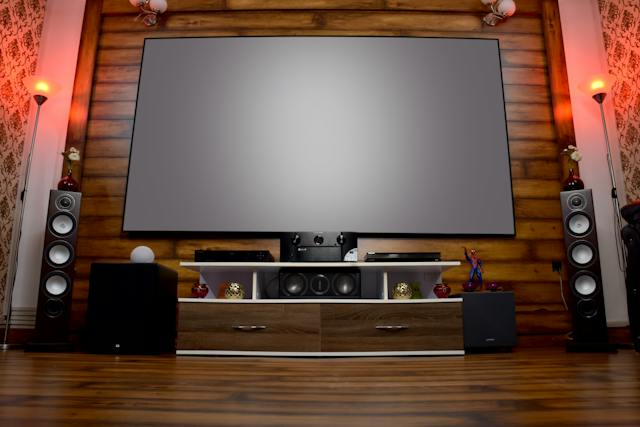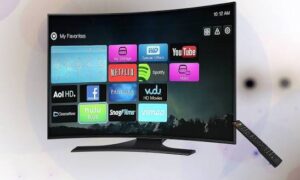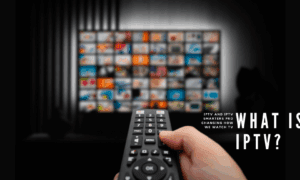If you love movies, TV shows, or any other kind of multimedia experience, you’ll feel right at home in a comfortable home theater that’s capable of supporting the types of media experiences you desire.
Unfortunately, creating a home theater from scratch is not only expensive, but time-consuming and complicated. If you’re not already intimately familiar with the technologies and setup requirements of a home theater, you might feel overwhelmed at the beginning.
However, with a bit of proactive research and preparation, you should be in a much better position to create the ultimate home theater experience for you, your family, and your friends.
The Setting
Before you start digging too deep into the technologies that are going to make your home theater experience complete, you’ll want to examine and make modifications to the overall setting. Most people have a home theater in the living room, or in a dedicated room for the experience, but you can technically set up a home theater anywhere that affords you enough space. What’s important is that you make adjustments to the surroundings to cultivate the right home theater experience.
For example, you might want to plan for your screen to be just above the fireplace mantel, drawing the room together aesthetically. If there’s not currently a significant viewing location, you may have to redecorate, move furniture, or even make structural changes to accommodate positioning.
The easiest approach is to choose a room that’s already empty, or a room with many different possible layouts. This way, you’ll have the most flexibility as you start choosing and assembling the technologies that constitute your home theater.
The Screen
One of the most important pieces of your home theater is going to be the screen.
- Type. If you want the full home theater experience, you’ll want a screen to be paired with a projector. But if this isn’t your vibe, or if you just want something simpler, you can also choose a typical television. Depending on your budget, you might choose a 4K or 8K TV; OLED TVs provide one of the best possible experiences, but make sure you compare and contrast different models so you understand the unique advantages and disadvantages of each.
- Size. It’s tempting to get the biggest screen you can afford, but bigger isn’t always better. You’re going to need to think not only about the size of the screen, but also the viewing distance; a screen that’s too big is going to prevent you from being able to see the entire screen at once, and the right size screen for a close viewing experience is going to be very different than the right size screen for a distant viewing experience.
- Compatibility. You’ll also want to consider compatibility with your other technologies. Most modern TV’s have several ports and connective features that make them easy to link up, but it’s still important to verify that this is the case.
- Controls. Ideally, you’ll be able to control your home theater with a single, unified control schema. Your TV or projector may be able to accommodate this.
- Future. You’ll also need to think about future proofing your screen. It’s easy to find a TV or projection screen suitable for today’s technology needs, but how is it going to fare over the next decade?
The Sound
There are many different kinds of home theater speakers you can consider, including towers, bookshelf speakers, wireless speakers, and more. For the best experience, you want at least an excellent set of central speakers, a subwoofer, and a couple of surround sound speakers. Make sure to voice match, meaning that all of your speakers are the same brand, for a more consistent experience.
The Furniture
Good furniture is going to make your home theater even more comfortable and inviting. Make sure you choose ergonomically compatible pieces of furniture that provide adequate seating for all your guests; also make sure there’s plenty of room to move around the furniture during the movie, when necessary.
The Extras
Having an environment where you can play top-quality video and audio while enjoying comfortable furniture is the height of luxury. But you may also want to add some finishing touches to make the environment more uniquely yours.
Consider these extras to bring your home theater to even greater life:
- The library. Where and how are you going to play your favorite shows and movies? Are you going to develop and display a physical disc collection? Are you going to launch your own media server? Avid collectors love to display collections of physical media, while digital archivists take pride in having digital files and countless streaming services available on demand. There’s no right or wrong way to approach this, but most film enthusiasts want their libraries to be as large and diversified as possible.
- Lighting. Home theater lighting can also make a big impact on your viewing and lounging experiences. Make sure there’s enough lighting for people to navigate, but not so much that it obscures the screen. Dimmable LED strips with color controls give you total customization potential; you can set a dim red for a spooky horror movie, a pale white for an old classic, or a vibrant array of colors for something more visually interesting.
- Snacks and drinks. What theater experience is complete without readily available snacks and drinks? Depending on the amount of space you have left, your budget, and your personal preferences, you may want to include a mini fridge, trays, and cupholders for easy snack and beverage access, or even something more ostentatious like a fully functioning, old-school popcorn machine.
- Décor. You’ll still want to enjoy the theater environment when you’re not screening media. Consider adding thematic décor to the room, such as movie posters, prop replicas, or memorabilia.
Setting up a home theater is an intensive process, but it’s well worth the effort if you love movies and TV shows. Once in place, it’s likely to become a favorite central gathering location for your family and your social circles.


































